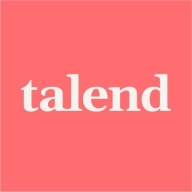

Talend Data Management Platform and Talend Data Fabric are both in the field of comprehensive data management solutions. Talend Data Fabric appears to have the upper hand due to its extensive features, despite Talend Data Management Platform offering more competitive pricing and support.
Features: Talend Data Management Platform focuses on data integration, quality, and governance, making it ideal for organizations needing data integrity and accessibility. Talend Data Fabric encompasses data preparation, integration, governance, API services, and application integration, making it attractive for enterprises seeking an all-in-one solution.
Room for Improvement: Talend Data Management Platform could enhance scalability, cloud integration capabilities, and real-time analytics features. Talend Data Fabric might improve by simplifying deployment processes, reducing costs, and increasing ease-of-use for non-technical users.
Ease of Deployment and Customer Service: Talend Data Management Platform provides straightforward deployment and solid support, beneficial for teams seeking efficient setups. Talend Data Fabric requires more complex deployment processes due to its extensive toolset but offers robust customer service to assist with intricate configurations, suiting larger organizations.
Pricing and ROI: Talend Data Management Platform offers cost-effective solutions with satisfactory ROI, targeting budget-conscious organizations. Talend Data Fabric involves higher initial costs with its expansive feature set but promises greater ROI for companies investing in its comprehensive capabilities.
| Product | Market Share (%) |
|---|---|
| Talend Data Management Platform | 1.1% |
| Talend Data Fabric | 0.9% |
| Other | 98.0% |


| Company Size | Count |
|---|---|
| Small Business | 4 |
| Large Enterprise | 3 |
| Company Size | Count |
|---|---|
| Small Business | 9 |
| Midsize Enterprise | 5 |
| Large Enterprise | 8 |
Talend, a leader in cloud data integration and data integrity, enables companies to transform by delivering trusted data at the speed of business.
Talend Data Fabric offers a single suite of apps that shorten the time to trusted data. Users can collect data across systems; govern it to ensure proper use, transform it into new formats and improve quality, and share it with internal and external stakeholders.
Over 3,000 global enterprise customers have chosen Talend to help them turn all their raw data into trusted data to make business decisions with confidence — including GE, HP Inc., and Domino’s.
We monitor all Data Integration reviews to prevent fraudulent reviews and keep review quality high. We do not post reviews by company employees or direct competitors. We validate each review for authenticity via cross-reference with LinkedIn, and personal follow-up with the reviewer when necessary.